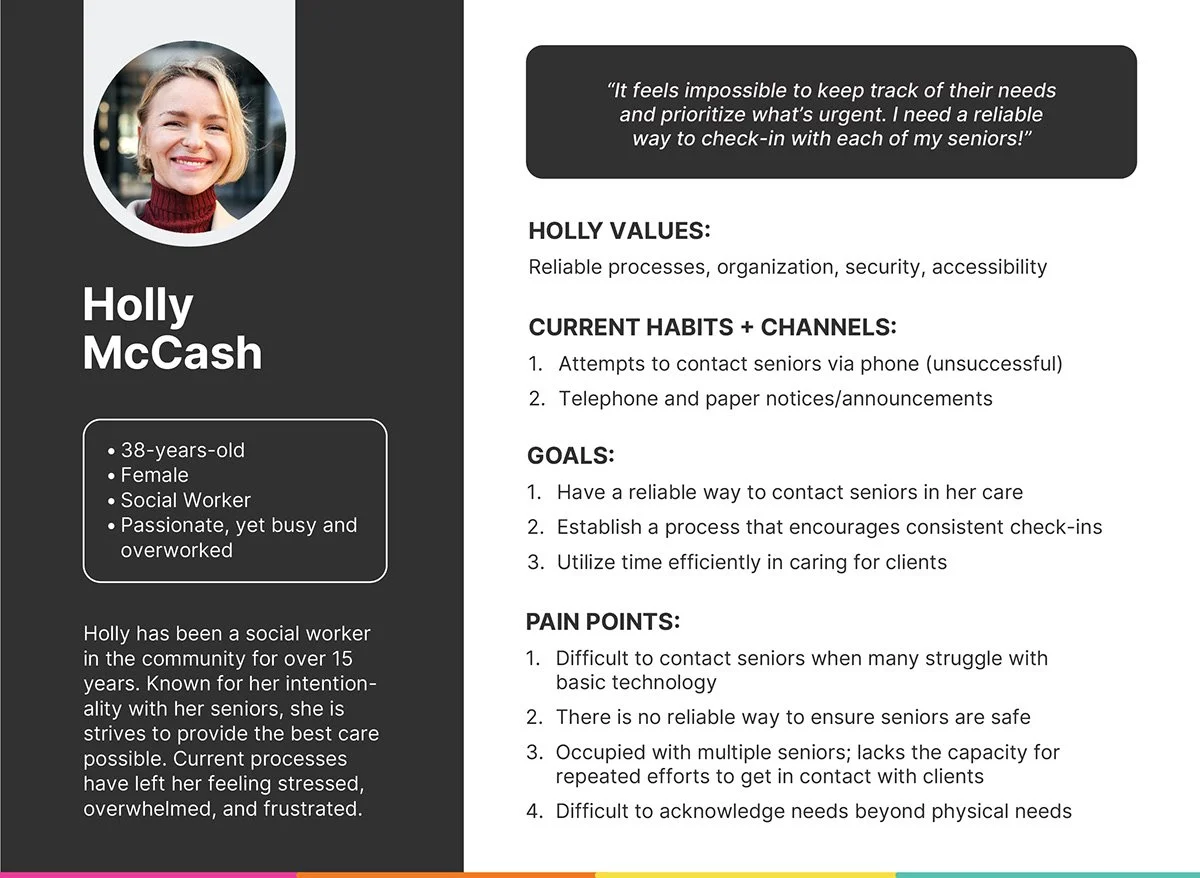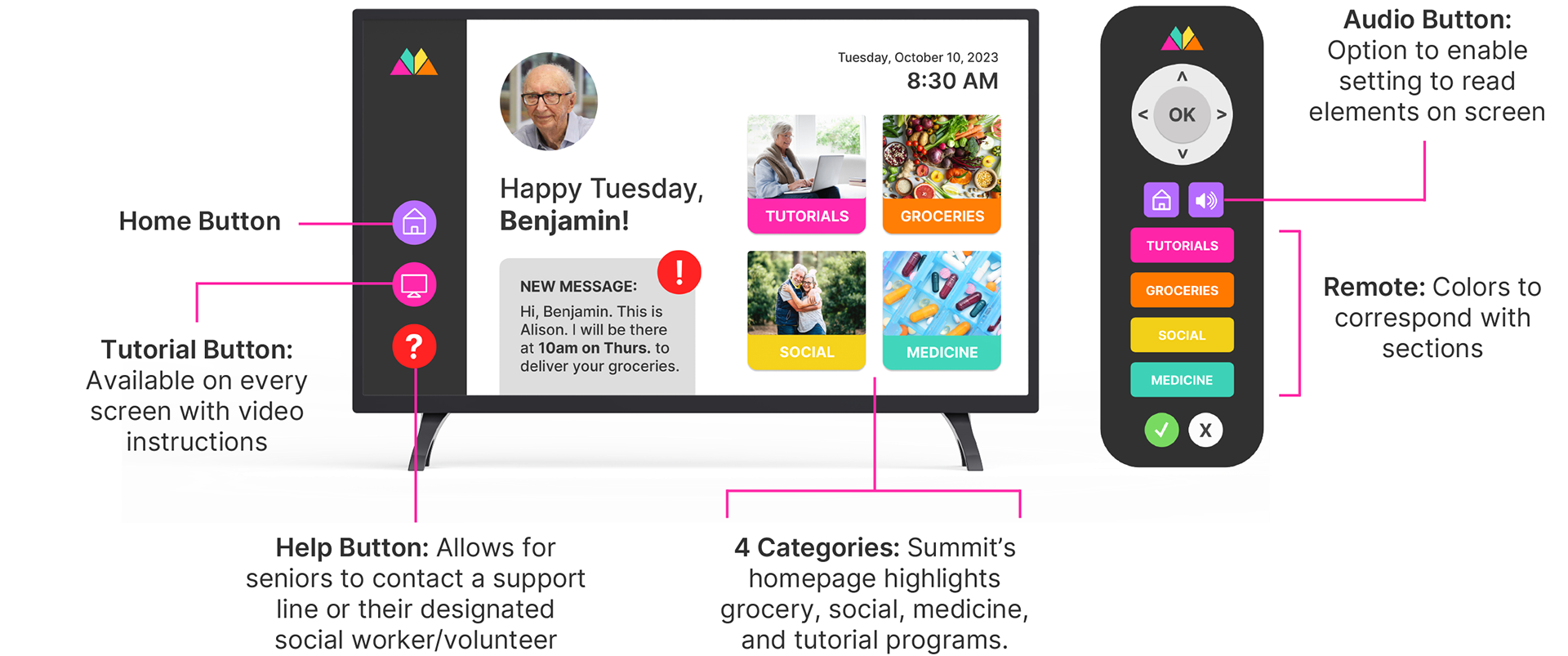
Summit Senior Care strives to revolutionize senior living at home to preserve the independence of our aging neighbors across the country through digestible technology and consistent communication.
The Problem: Senior citizens living alone, often without family in close proximity, struggle to communicate their needs and receive adequate assistance.
Competitive Analysis
There are few television platforms that are designed specifically for seniors. Plus, out of the few that have been relatively successful, they all rely on family involvement and fail to use technology to facilitate independence.
Research Findings
Initial research covered the relationship between seniors and technology, accessibility needs for seniors, and how to create successful UI design with these needs accommodated.
TV Systems have been proven to be the most comfortable form of technology for seniors. According to the National Institutes of Health, “TV watching accounted for half of leisure time activity among adults aged >65 years.”
Interviews
In an effort to gain the most insight into the current pain points, I chose to interview a 90-year-old senior who lives alone, a local volunteer, and a coordinator for a large non-profit dedicated to serving the elderly.
Some of the most valuable questions asked include: (1) What are the biggest challenges you observe for seniors living alone? (2) Has technology restricted your ability to contact the seniors that you serve? (3) For Seniors: What about technology seems to be the most difficult to figure out?
Key Insights
(1) Many seniors are struggling from a lack of consistent and reliable assistance. (2) The majority of current technology is too complicated for seniors; they are in need of a simple and clear process. (3) Common difficulties revolve around daily tasks such as grocery shopping, taking medication, socializing with others, and asking for help. (4) Talking through processes is significantly easier for seniors to learn and feel comfortable.
User Personas
The three user personas below represent each of the 3 people groups that are currently affected: seniors, social workers, and secondary volunteers.
Journey Map
This journey map outlines Benjamin’s grocery experience by following the progression of the awareness of his need, to looking for help, to the completed task. It highlights the pain points of the current user journey, giving insight into opportunities for greater development.
Design Concept
We will design a custom senior living experience that is simple and reliable so that seniors living alone can maintain a sense of independence and feel in control.
Accessibility Research
Low-Fidelity Prototype
*User Testing encouraged changes to the medicine panel, grocery panel, the remote, and tutorial options. For example, users requested a reminder notification that medicine was already taken, adding quantity on the grocery screens, and expanding the prevalence of tutorials to facilitate learning.
Hi-Fidelity Prototype
Includes the Smart TV app for seniors as well as mobile app for social workers and volunteers.
Each senior is shown from a profile view, allowing the person with access to check medicine status and check requests. When a senior sends a message, the users with access are notified. Messages can be marked as accepted to ensure that requests are never overlooked.
Summary of Summit
Summit Senior Care serves to preserve the independence of our aging neighbors across the country through digestible technology and consistent communication.
Takeaways
(1) Technology has the power to transform the lives of people in every demographic, yet we lack systems that are custom to meet the needs of some of the most vulnerable populations. (2) Accessibility is crucial in design. What’s the point of creating a system that is unusable for many?













